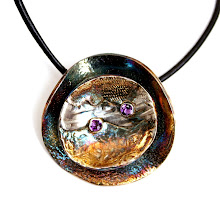South Sea Cultured Pearls
South Sea pearls come from the largest mollusks in the world. The mother-of-pearl lining on the shell is used to make buttons and sometimes inlay work. This was the original focus of the harvest of the South Sea pearls.
South Sea Pearls are harvested in three major areas. Approximately 61% come from Australia, 29% come from Indonesia and about 10% from the Philippines. The Australian oysters tend to be the largest of the three producing the majority of the largest pearls. In Australia the harvest is done during the Southern Hemisphere’s winter which is June, July and August. During this time the water temperature is very low and the pearls have their most luster and color. The Indonesian pearls closely resemble the Philippine pearls. The largest difference is the size as the Indonesian pearls range from 8 to 13 mm rather than the 10 to 20 mm that the Australian pearls range. The harvest for the Philippine pearls is done during the wet season which is June through November. The other difference is the color. Indonesian pearls will produce more cream and yellow pearls as they focus on the gold-lipped variety. Australian pearls focus more on the silver-lipped variety and will produce more of the white pearls with overtones of rose’, blue or green.
One of the characteristics of a South Sea pearl is their large size. South Sea pearls range from 9 mm to 20 mm in diameter with most of them being around 13 mm. The growth period of a South Sea pearl is around 2 years. A South Sea oyster can be nucleated (have a bead inserted) up to 3 times and very often the third time will produce the largest pearl.
Because the South Sea oyster lives in warm waters they deposit a very thick coating of nacre 2 mm to 6 mm and this is done much more quickly than an oyster in a cooler climate. This thick nacre gives the pearl a soft glow rather than a metallic sheen. The glow also gives color. Silver, white and yellow are the most common colors that you will see. The color depends largely on if it is a silver-lipped or gold-lipped oyster. The edge of the mantle tissue will influence the pearl color. The silver-lipped variety will produce predominately white to silver pearls that might have a rose’, blue or green overtone. The gold-lipped variety will produce pearls that range mostly from yellow to yellowish orange which the trade may refer to as golden.
Strands of pearls are what we think of when we think of pearl jewelry. A strand of South Sea pearls would be very expensive so a lot of jewelry made with South Sea pearls uses individual pieces. Round and near round South Sea pearls only make between 10 to 30% of the harvest. Ovals, buttons and drops make 40 to 60% of the harvest with baroques making between 20 and 40%. Because of this you will find that other shapes than round give a greater opportunity for designing jewelry. Even though baroques don’t make up the majority of the harvest their prices are not pushed up so you will see them in many unusually designed pieces using South Sea pearls but at a reasonable price. Large Keishi pearls are very rare and a strand of keishi South Seas are in demand.
Typical rating for South Sea pearls luster is excellent, good and fair. The surface quality is considered either clean or lightly blemished and the nacre quality is graded as acceptable or not acceptable
Wednesday, July 29, 2009
Subscribe to:
Post Comments (Atom)



No comments:
Post a Comment